
Hoi An
How to travel to Hoi An for your best experience
Hoi An is a place where the bold march of progress peters into a leisurely amble. In this one-time trading port, the Thu Bon River meanders past crumbling shop houses and weathered pagodas, while sampans come and go from the old ferry quay. Outside the Old Town, two-lane roads slice through waving rice fields and emerge at a frothy coastline.
Hoi An’s architecture gives an insight into the town’s mixed heritage, with Dutch and French colonial houses squeezed between Chinese tea warehouses and Japanese temples. Local cafés, museums and open-fronted shops run alongside old canals.
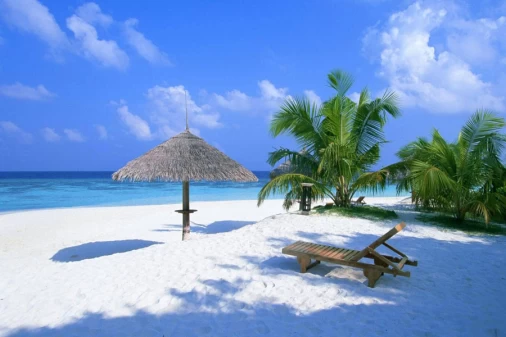
An Bang Beach
An Bang Beach, located in the city of Hoi An in Vietnam has been voted amongst the top 50 beautiful...
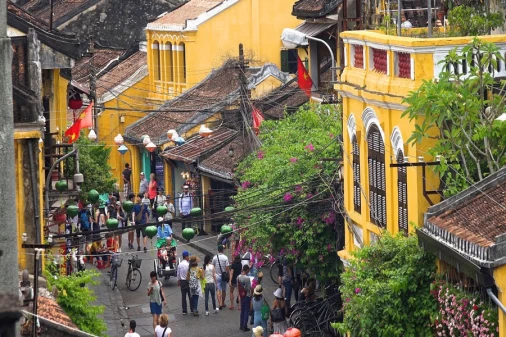
Central Market Hoi An
Description: Sharpen your bargaining skills and head south east to Hoi An Central Market, one of Vietnam’s...
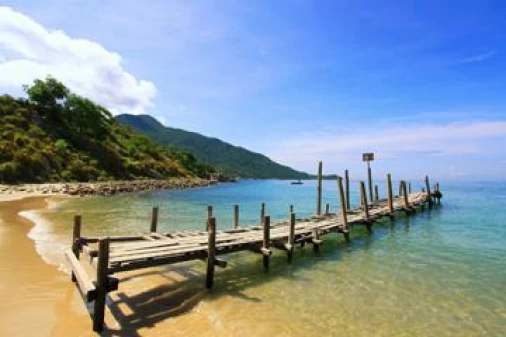
Cham Island
Cham Islands consists of eight small islands off the coast of Hoi An, one of which is a recognized UNESCO...
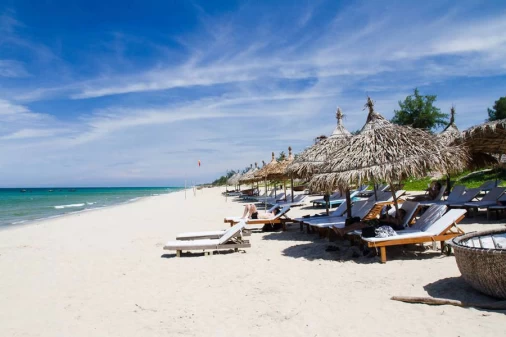
Cua Dai Beach
Cua Dai Hue Beach is always in the top of Asia’s most beautiful beaches. Here there are small waves,...
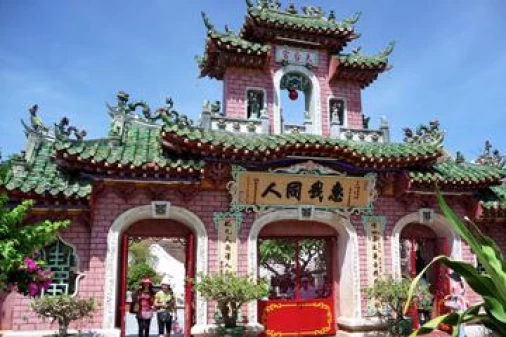
Fujian Assembly Hall
Fujian (Phuc Kien) Assembly Hall was built around 1690 and functions as a traditional assembly hall...
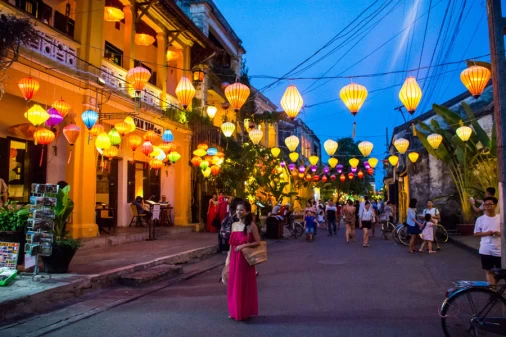
Hoi An Ancient Town
Hoi An, once a major Southeast Asian trading post in the 16th and 17th centuries, is basically a living...
Frequently asked questions
Graceful, historic Hoi An is Vietnam’s most atmospheric and delightful town in the Center. Once a major port between the 15th and 19th centuries, it boasts the grand architecture and beguiling riverside setting that befits its heritage.
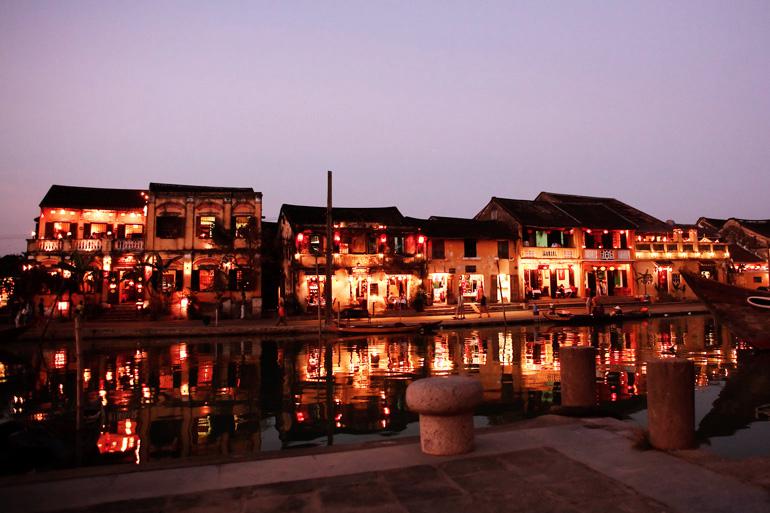
Today, it’s a UNESCO World Heritage Site, with beautiful temples, picturesque streets, and ancient buildings. To Hoi An is to peaceful setting, slow-paced and traditional lifestyle, for travelers who want a truly relaxing vacation in Vietnam. And yes, it is definitely worth your visit!
1. Exploring My Son Sanctuary
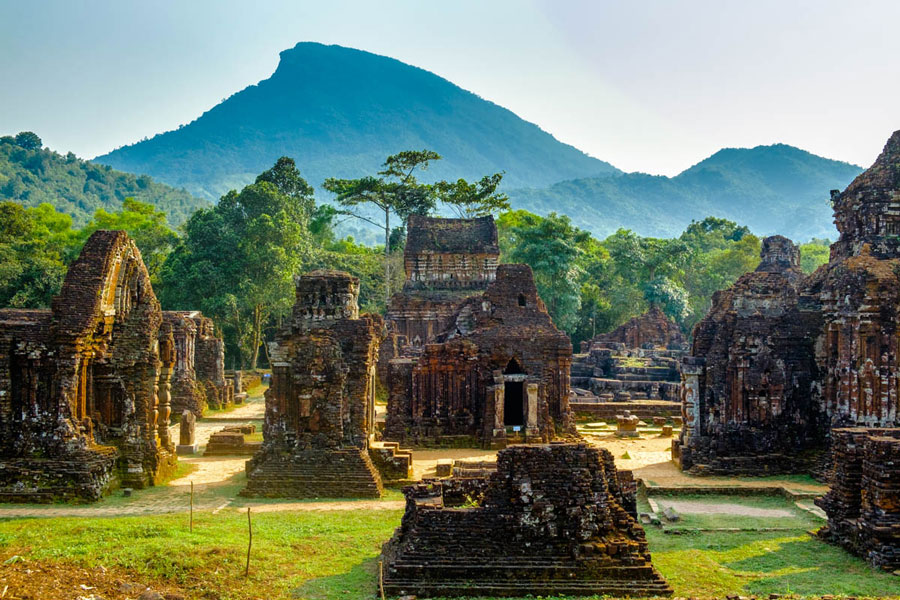
My Son is one of the most important sites relating to the ancient Kingdom of Champa and is said to have been Vietnam’s religious and intellectual center. Once of time, My Son was also a political center and a royal burial ground and the complex consists of more than 70 structures devoted to Hindu gods and goddesses and the most noticeable one, Shiva, was considered the protector of Champa’s kings.
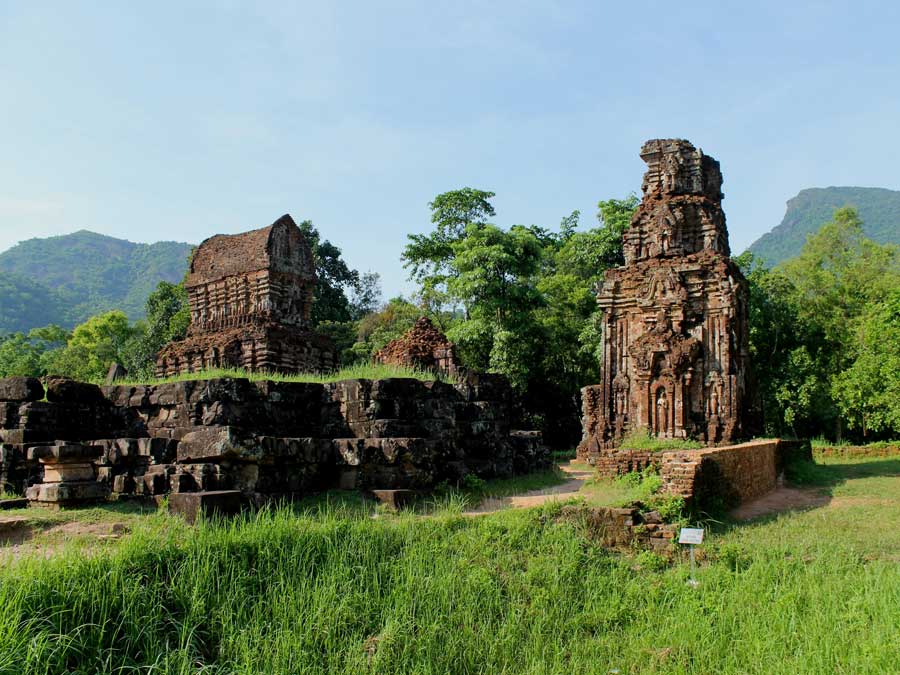
Unfortunately, My Son was destroyed by time and wars and after lying neglected for a long time it was rediscovered and renovated by the French in 1898. But even in their ruined state, the remaining Hindu temple structures are impressive. (Admission fee is from $6.45 USD per person)
2. Relaxing by the beach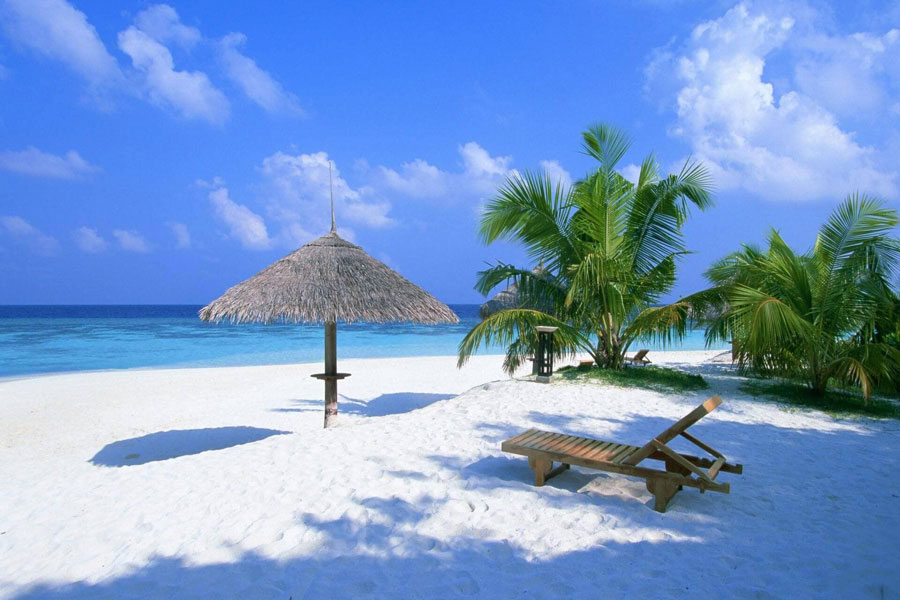
An Bang and Cua Dai beaches are great places to enjoy sunbathing and watersports (paddle-boarding, surfing). Both of them are beautiful offering soft white sand, spectacular wave conditions, comfortably warm climate and excellent beachside restaurants. Further note, Cua Dai was designated as one of Vietnam’s five UNESCO World Heritage sites. It is not a surprise when tourists and expats gather here the most during the weekends.
3. Shopping at Hoi An Center Market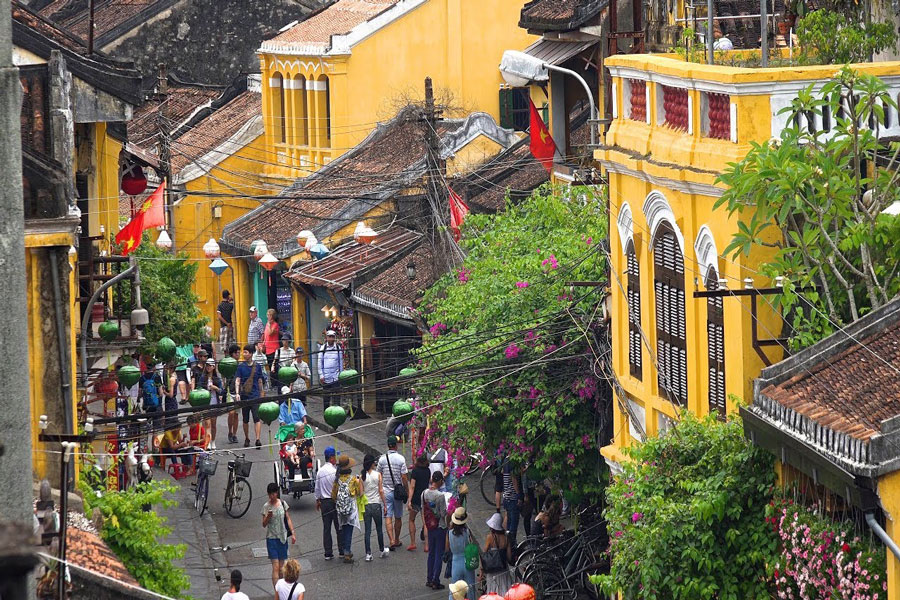
Resting on the banks of the Thu Bon River, bustling Hoi An Central Market is certainly worth a look for its authentic slice of Vietnamese life. There is a vast array of foodstuffs for sale including spices such as saffron and cinnamon which are superb purchases as are the exotic fresh fruit and vegetables on display. The marketplace is renowned for its tailors who have a section of the market all to themselves.
Fine silk tailoring is cheaper here than anywhere else in Hoi An with garment makers running up a dress, shirt, jacket or full suit usually within 24 hours. Souvenir and local handicraft hunters will also find plenty to browse through at the Central Market. Once being here, you may have an unmissable shopping experience.
4. Boarding to Cham Island
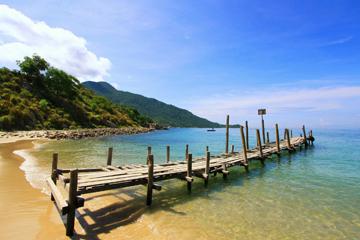
Cham Islands consists of eight small islands off the coast of Hoi An, one of which is a recognized UNESCO World Biosphere Reserve. The most popular things to do on Cham Islands mostly center around the beaches (Bai Cong, Bai Ong, Bai Bac, and Bai Xep), such as swimming, sunbathing and water-sporting. Also, as home to a thriving coral reef system and marine life, Cham Island is a popular spot amongst diving enthusiasts.
However, the Cham Islands are inaccessible during the monsoon period, which takes place between October and February. The islands experience strong winds and waves that make traveling dangerous so there are no trips available at this time of the year.
5. Crossing the Japanese Covered Bridge
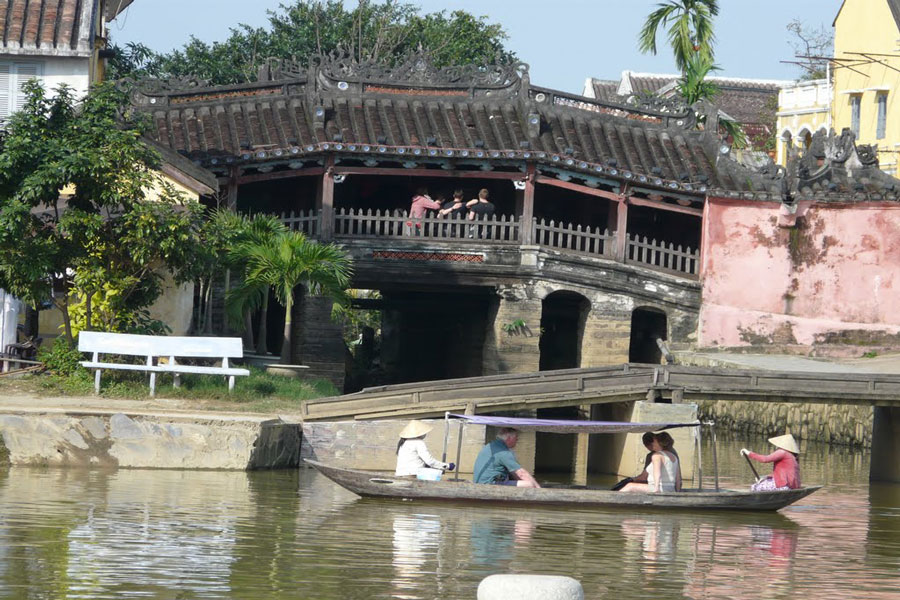
One of Vietnam’s most iconic attractions, Hoi An’s Japanese covered bridge dates back to the 18th century and is a beautiful historical piece of Japanese architecture. It is claimed that it was created by the Japanese then living in Hoi An as a way to reach the Chinese quarter across the water.
On the north side of the bridge, you’ll discover a temple dedicated to the Taoist God of weather, Tran Vo Bac De. This is where locals will often pray to stave off any impending earthquakes. The Japanese Covered Bridge is very well preserved and features a roof, so you can visit at any time of day regardless of the heat or the rain.
Two great things about Hoi An’s Old Town are that it is small enough to get around on foot and the traffic is nowhere near as heavy as in bigger cities. So two days in Hoi An, with the right planning, may seem enough time for you to enjoy numerous sightseeing opportunities, and you can definitely make the most out of your short stay in the UNESCO-listed town.
Day 1: Hoi An Central Market – Cham Islands – Hoi An Old Town – Thu Bon River
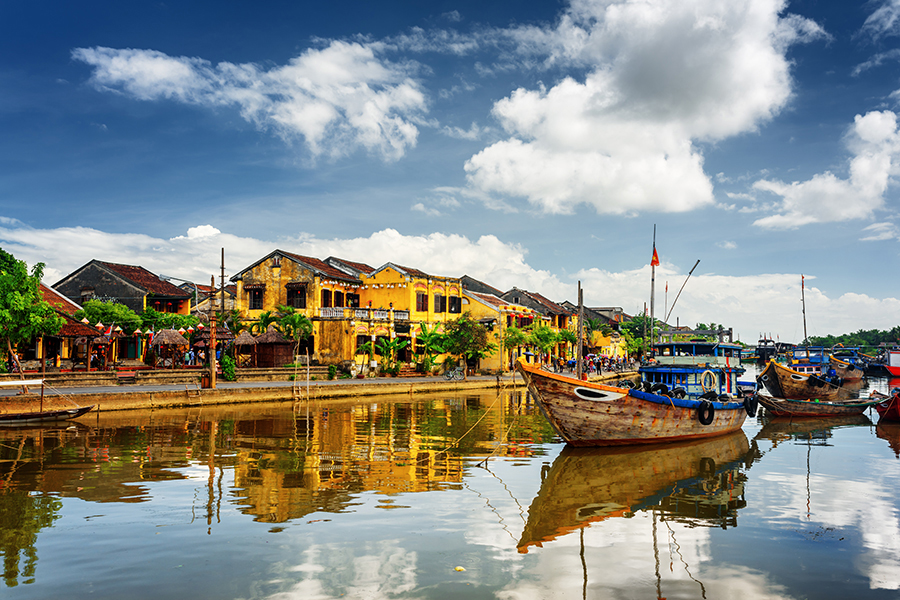
AM: Spent your time in the morning exploring Hoi An Central Market for a glimpse of authentic Vietnamese life. Taste delicious street foods and hearty delicacies, such as Banh Mi, Pho, and other regional specialties.
PM: Take a two-hour boat ride to Cham Island and enjoy an afternoon of snorkeling or scuba diving here. Get back to Hoi An Ancient Town and take a tour on foot to admire the beauties of tourist attractions of Japanese Covered Bridge, Fujian Assembly Hall, Chuc Thanh Pagoda, and Hoi An Museum of History & Culture.
Visit tailoring services and shop custom-made dresses, suits, shirts, and shoes at an affordable price. Get to Thu Bon River, where there are elegant lamps illuminating across the bank, in the late evening to hang out and enjoy a few drinks, snacks or a game of pool and darts.
Day 2: My Son Sanctuary – An Bang Beach – Hoi An Riverside
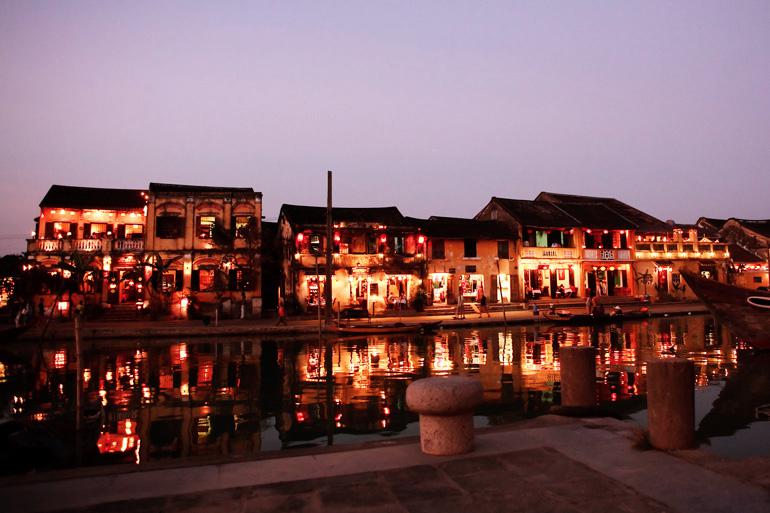
AM: Visit a UNESCO World Heritage Site – My Son Sanctuary – to witness many beautiful stone sculptures, temples, and towers of the ancient Champa civilization dating back to the 17th century, in tropical jungle surroundings.
PM: Make your way to the unspoiled An Bang Beach for soaking up the sun and enjoying an array of seaside activities. Enjoy the stunning views of the neighboring Marble Mountains, Da Nang Bay, and Da Nang and Cham Islands. Late afternoon, get to Hoi An Riverside to see hundreds of colorful handmade lanterns, local vendors and street performances along the narrow streets. Dine typical Vietnamese dishes at a roadside restaurant and have a vivid night at some lounge bars with live bands and DJ performance.
If you are a veteran backpacker, please feel free to manage the trip your own and alter it when needed, else, we recommend you join a tour organized by a professional company, that can free you from hassles and keep you safe throughout the journey.
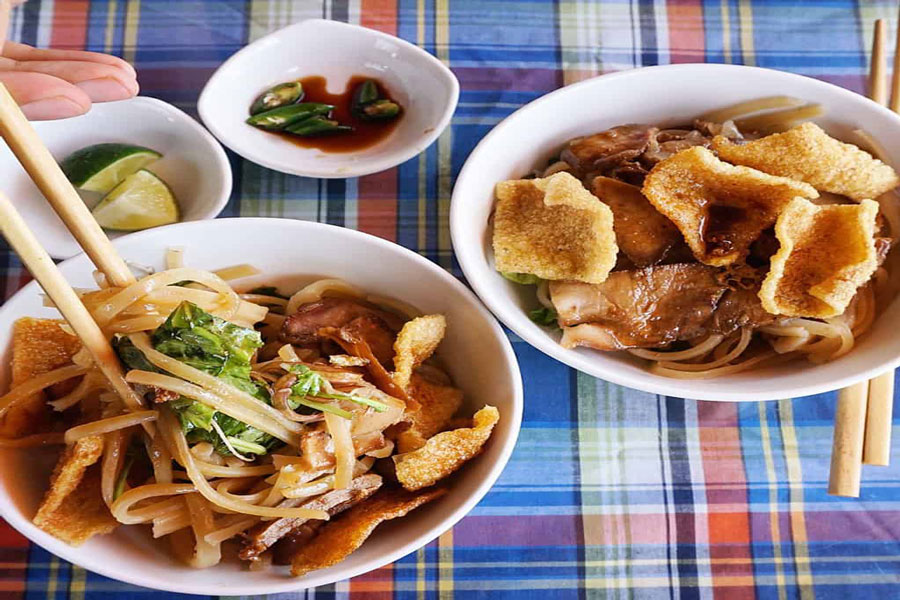
1. Cao Lau is Hoi An’s definitive dish, comprising chewy udon-like rice noodles, Chinese barbecued pork slices, beansprouts, croutons, and fresh herbs in a pork-based gravy. This local delicacy is only available in Hoi An because the noodles can only be cooked using water from well-hidden ancient Cham wells while fresh greens are sourced from Tra Que Vegetable Village.
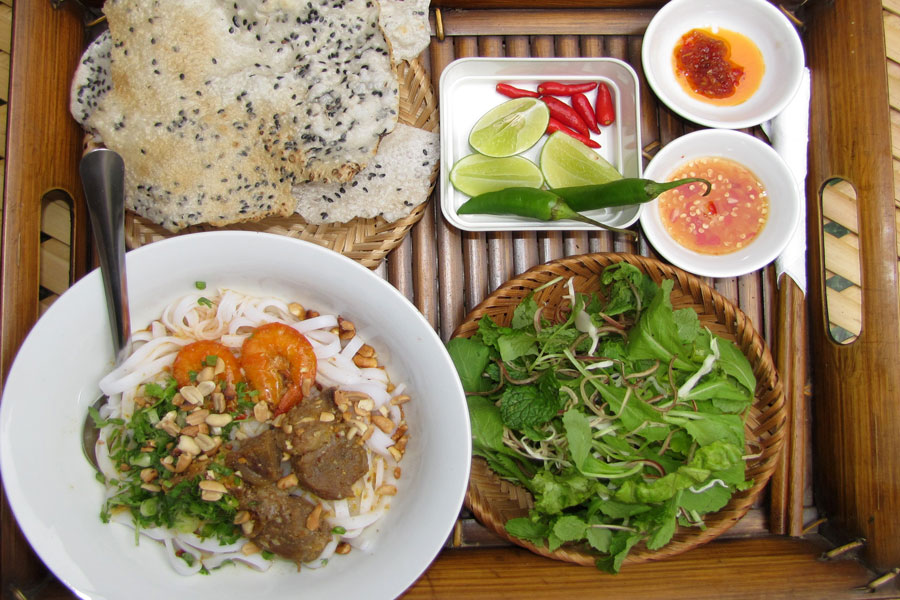
2. Mi Quang consists of yellow rice noodles, bone broth seasoned with fish sauce, black pepper, shallot, and garlic, topped with a variety of meat, herbs, and local greens. Traditionally, meat toppings are either chicken, pork, or beef slices, but many restaurants now include squid, boiled quail eggs, snails, and frogs.
As with most noodle and rice dishes in Vietnam, Mi Quang also features lots of fresh herbs and other additions such as basil, peanuts, coriander, sliced banana flowers, and sesame rice crackers.
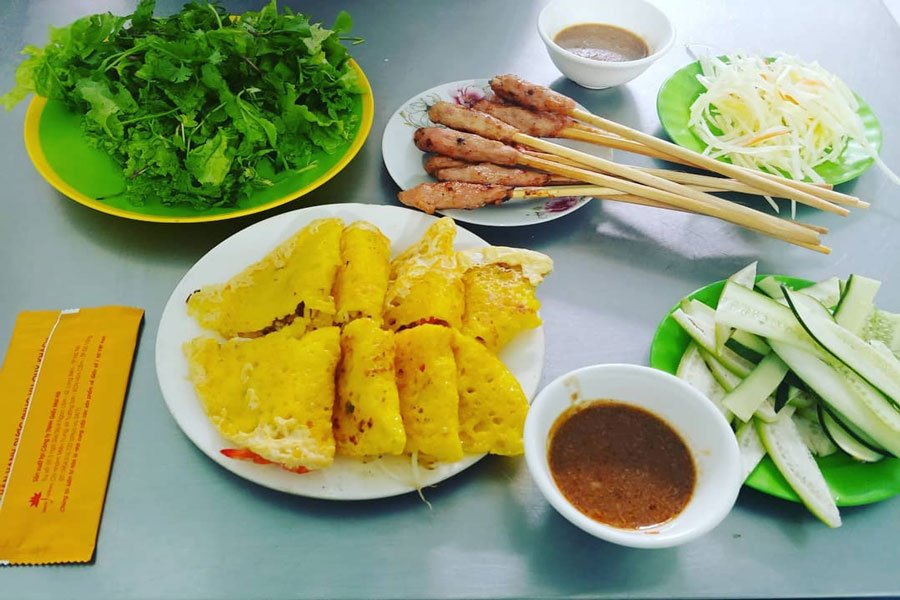
3. Banh Xeo is a typical Vietnamese snack or appetizer, made of rice flour, coconut milk, and turmeric, filled with ingredients such as vermicelli noodles, chicken, pork or beef slices, shrimps, sliced onions, beansprouts, and mushrooms. Eat like the locals by wrapping the crispy pancake in mustard leaf, lettuce leaves or rice papers together with Nem Lui, mint leaves, and basil, then dip it in fermented peanut sauce.
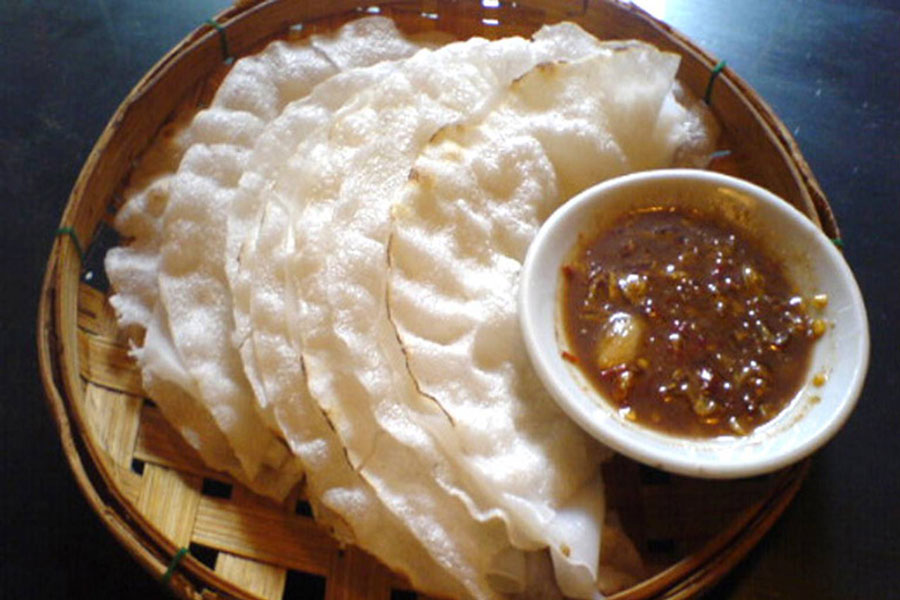
4. Banh Dap is a traditional snack that’s exclusively available at Cam Nam Village, located about 10 minutes away from Hoi An Ancient Town. It’s made by placing a wet rice paper atop a crispy one before layering on some mung bean paste, fried shallots, and chopped spring onions.
Finally, another crispy rice paper covers the entire ensemble. It’s also known as smashing rice paper, as you get to crush the Banh Dap into pieces on the table before enjoying it with some fermented fish sauce with chilies.
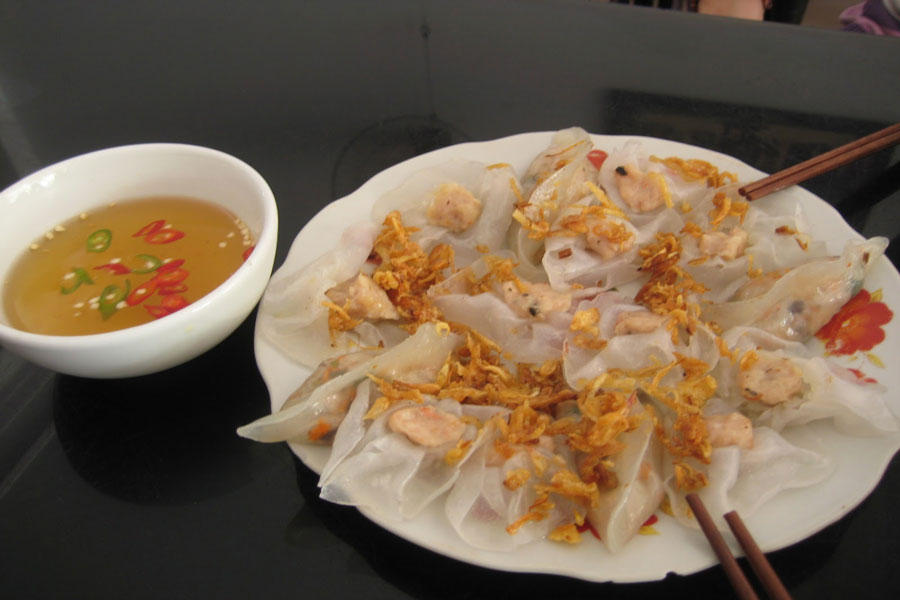
5. Banh Bao Vac is a local appetizer that resembles delicate white roses displayed on a platter. Each dumpling is made by wrapping shrimp or pork filling in flattened rice dough before cooking it in a steamer. Once soft and translucent, Banh Bao Vac is carefully arranged on a flat plate, topped with shallots, and served with a dipping sauce made from shrimp broth, chilies, lemon, and sugar.
Hoi An is warm the whole year-round, with an average daily temperature of 84°F (29°C). It rarely ever goes below 66°F (19°C) here. Unlike Northern Vietnam, Hoi An only has two seasons: rainy, and dry.

February through May is the best time to visit Hoi An thanks to pleasant daily temperatures and endless blue skies. If you want to hit the beaches (like Cua Dai and An Bang) this is also an excellent time to come. June through August are the hottest months, with temperatures soaring as high as 100°F (38°C). Humidity can be high as well.
Hoi An’s rainy season lasts from September to January, with frequent heavy rain showers. These showers typically do not last long, but Hoi An has been prone to flooding in the past. Tourism traffic is also slowest during this time, on the other hand.
If you want some excitement during your visit, plan your trip around the 14th day of the month’s lunar cycle. This is Hoi An’s Full Moon Festival and the city comes alive with music, dance, and celebrations.
You may be surprised when finding out that Hoi An has no airport, and no train station either. The only way to get there is by road. But from Ho Chi Minh City or Hanoi, you can always catch daily flights/ take a train (or bus) to Da Nang (a near and hand city) and from there, transportation services to Hoi An are plentiful.

Flight to Da Nang: To Da Nang International Airport it costs about 80 minutes. The price starts at $50.
Train to Da Nang: To Da Nang Railway Station it costs about 20 hours. The price at from $30.
Bus to Da Nang: To Da Nang Bus Station it costs about 23 hours. The price starts at $15.
From Da Nang to Hoi An: It normally take 1,5 hour by bus. The price starts at $6.
Throughout this article, we wish you to have an idea of how to travel to Hoi An for your best experience. In case you are looking for your own travel agent, who can offer a wonderful and hassle-free trip to Hoi An, please feel free to let us know. We always commit our best to make it your once-in-a-lifetime journey.
You may also like
Glimpse Of Central Vietnam 5 Days
- Depart Time:Daily
- Starts/Ends:Da Nang/Da Nang
- Tour type:Private Tours
- Travel Style:Heritage Tours, Family Tours, Culture & History
- Activities:Walking tours, Sightseeing Tours, Cultural, religious and historic sites tours, City sightseeing tours
- Suitable for:Solo, Family, Group, Couple
- Age range:1 To 90 Years
- Operated in:English, French, Spanish, German, Italian
Must See Of Central Vietnam 6 Days
- Depart Time:Daily
- Starts/Ends:Da Nang/Da Nang
- Tour type:Private Tours
- Travel Style:Heritage Tours, Family Tours, Culture & History
- Activities:Walking tours, Sightseeing Tours, Cultural, religious and historic sites tours
- Suitable for:Solo, Family, Group, Couple
- Age range:1 To 90 Years
- Operated in:English, French, Spanish, German, Italian
Highlights Of Central Vietnam 7 Days
- Depart Time:Daily
- Starts/Ends:Da Nang/Da Nang
- Tour type:Private Tours
- Travel Style:Heritage Tours, Family Tours, Culture & History
- Activities:Walking tours, Sightseeing Tours, Local culture tours, Cultural, religious and historic sites tours, Countryside and village visits tours
- Suitable for:Solo, Family, Group, Couple
- Age range:1 To 90 Years
- Operated in:English, French, Spanish, German, Italian
 France
France  Spain
Spain  German
German  Italian
Italian 




 Vietnam Tours
Vietnam Tours  Cambodia Tours
Cambodia Tours  Myanmar tours
Myanmar tours  Thailand Tours
Thailand Tours  Laos Tours
Laos Tours